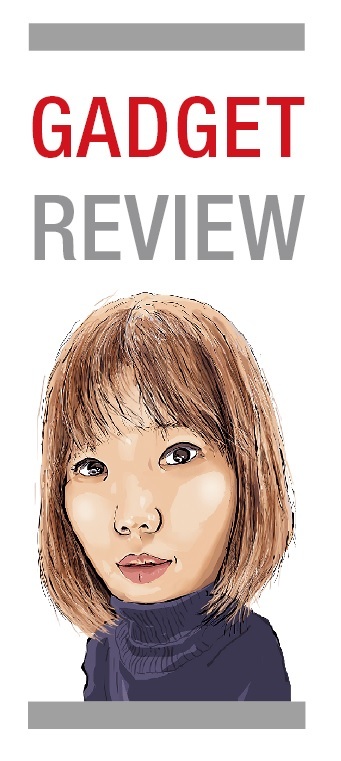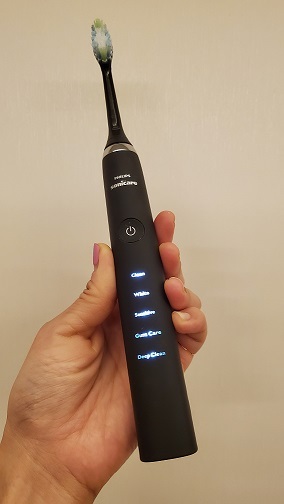Hope it isn’t too late to express my thanks to Roy Jakobs, head of personal health business of Royal Philips.
I was more than lucky to meet the Philips executive at the Consumer Electronics Show 2020 in Las Vegas held in January, obviously when the world was yet naïve to the COVID-19 pandemic.
During an interview with Jakobs, I was impressed by his shiny smile during our conversation about the importance of oral hygiene and related Philips products. Naturally, I decided to try one myself.
With support from the Korean office of the Dutch multinational conglomerate I could test Philips Sonicare DiamondClean’s deep clean edition over the last six months.
Sonicare is the signature electric toothbrush brand of Philips, featuring its sonic technology that enables the brush head to vibrate hundreds of times per second.
The DiamondClean model includes a Sonicare toothbrush handle, an AdaptiveClean brush head, a DiamondClean brush head, a tongue care brush head, a charging glass, charging travel case, two hygienic brush head caps and a USB cable.
While the Adaptive brush is literally designed to contour to teeth and gums for plaque removal and deep cleaning, the DiamondClean brush with a rhombus shape removes surface stains.
It offers five brushing modes that include clean, white, sensitive, gum care and deep clean.
Personally, the standard clean mode sometimes felt too strong, and I leaned toward the sensitive mode.
So what is special about the deep clean edition?
It is a premium Sonicare model that vibrates 31,000 times per minute, the company explains.
The high frequency sonic vibration minimizes irritation on teeth and gum, while maximizing its effectiveness on plaque. It is said to remove up to 10 times more plaque than traditional brushes.
While sweeping away plaque, the sonic movements whisk fluid to create microbabbules that reach deeper between teeth.
With the Sonicare toothbrush, my brushing time has gotten a lot longer and well, fancier.
Start with the Adaptive brush to clean the enamels of molars, premolars and canines both in the upper and lower parts. Then change the head with the DiamondClean brush. This one is smaller and softer, and is really suitable for cleaning the surface of front teeth. The last step is to use the tongue care brush that delivers the highest level of satisfaction. It felt more sophisticated and stronger compared to ordinary manual tongue brushes.
I, however, can’t guarantee the Philips DiamondClean toothbrush whitens your teeth in just one week as the company claims.
But I can assure you that it helps break the bad brushing habits.
So, do electric toothbrushes scientifically help improve teeth health?
In curiosity, I sought advice from professional dentists.
Historically, electric toothbrushes were invented in the 1920s to assist people with disabilities with properly brushing their teeth.
“Electric toothbrushes do help those with physical difficulties take better care their teeth,” said Dr. Jo Jae-wook of Good Mind Dental Clinic in Seoul. “The electric tooth-brushing can be likened to automatic car wash, which can never beat the quality of hand wash.”
“However, the devices are helpful for kids, even adults, who have poor brushing skills,” he added.
By Song Su-hyun (
song@heraldcorp.com)





![[Herald Interview] 'Trump will use tariffs as first line of defense for American manufacturing'](http://res.heraldm.com/phpwas/restmb_idxmake.php?idx=644&simg=/content/image/2024/11/26/20241126050017_0.jpg)

![[Health and care] Getting cancer young: Why cancer isn’t just an older person’s battle](http://res.heraldm.com/phpwas/restmb_idxmake.php?idx=644&simg=/content/image/2024/11/26/20241126050043_0.jpg)

